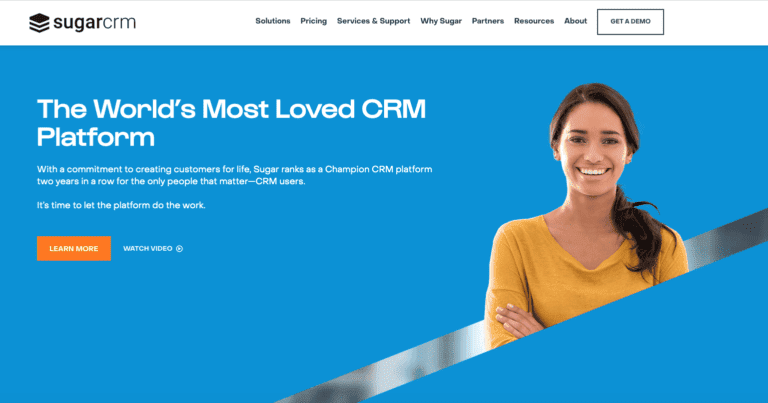Customer Engagement Platform vs. CRM: The 2025 Shift to Omnichannel Success
The digital landscape is evolving, and so are customer expectations. Today’s consumers demand seamless, personalized, and real-time interactions with brands across multiple channels. This shift has exposed the limitations of traditional CRM (Customer Relationship Management) systems and fueled the rise of Customer Engagement Platforms (CEPs). In this article, we’ll explore the differences between CEPs and traditional CRMs, and explain why engagement-focused platforms are the future of customer experience.
What Is a Customer Engagement Platform (CEP)?
A Customer Engagement Platform is an integrated, data-driven technology solution designed to help businesses understand and interact with their customers across all channels and touchpoints. CEPs unify customer data, leverage advanced analytics, and orchestrate personalized, real-time engagement, ensuring every interaction is relevant and impactful15.
Key Features of a CEP:
- Omnichannel Engagement: Seamless experiences across web, mobile, social, email, SMS, and more15.
- Customer Journey Orchestration: Mapping and managing customer journeys for cohesive experiences1.
- Real-Time Personalization: Delivering tailored content and offers based on live customer behavior15.
- Unified Customer Data: Creating a 360-degree view by consolidating data from multiple sources15.
- Advanced Analytics: Using AI and machine learning to extract actionable insights145.
- Scalability and Integration: Easily connecting with existing systems and scaling as your business grows15.
Traditional CRM: Strengths and Shortcomings
CRMs were built to manage customer data, track sales, and automate certain business processes. They excel at storing customer information, managing pipelines, and supporting sales and service teams147.
CRM Core Functions:
- Customer Data Management: Centralized storage of contact and interaction information147.
- Process Automation: Streamlining sales, marketing, and support workflows17.
- Reporting: Basic analytics on sales performance and customer interactions14.
Where CRMs Fall Short:
- Siloed Data: Often limited to departmental use, leading to fragmented customer views14.
- Limited Engagement: Focused on operational efficiency, not on proactive or personalized engagement14.
- Manual Data Entry: Reliant on users to update and maintain records, increasing the risk of errors1.
CEP vs. CRM: A Side-by-Side Comparison
| Feature/Focus | Traditional CRM | Customer Engagement Platform (CEP) |
|---|---|---|
| Primary Purpose | Manage customer data & processes | Orchestrate personalized engagement |
| Data Management | Manual entry, siloed, static | Unified, dynamic, cleansed |
| Engagement | Limited, mostly reactive | Proactive, real-time, omnichannel |
| Analytics | Basic reporting | Advanced AI/ML-driven insights |
| Personalization | Minimal | Deep, contextual, and real-time |
| Integration | Departmental, often limited | Enterprise-wide, scalable |
| Customer Experience | Operational efficiency | Superior, coordinated, and personalized |
Why Customer Engagement Platforms Are the Future
1. Omnichannel Is the New Standard
Modern customers interact with brands across multiple platforms—websites, apps, email, social media, and more. CEPs ensure these interactions are consistent and connected, preventing the disjointed experiences that can frustrate customers and lead to churn15.
2. Real-Time, Personalized Engagement
CEPs leverage AI and machine learning to analyze customer behavior and trigger personalized messages, offers, or support at the right moment. This level of responsiveness is impossible with traditional CRM systems15.
“A CEP enables brands to meet these expectations by tracking user interactions across different touchpoints and using AI-driven automation to deliver targeted content, recommendations, and offers.”5
3. Unified Customer View
By consolidating data from all touchpoints, CEPs create a 360-degree customer profile. This unified view empowers brands to deliver seamless, context-aware experiences that drive loyalty and satisfaction15.
4. Data-Driven Decision Making
CEPs provide deep analytics and actionable insights, enabling businesses to refine their engagement strategies, predict customer behavior, and proactively address churn risks145.
5. Increased Customer Loyalty and Retention
Engagement-focused platforms foster stronger relationships by making every interaction valuable and relevant. Research shows loyal customers are significantly more likely to make repeat purchases, boosting long-term revenue25.
The Power of Integration: CRM and CEP Together
While CEPs are designed for engagement, they can complement CRMs by integrating operational data with engagement insights. This integration enables businesses to:
- Create a unified customer view
- Ensure seamless data flow
- Gain deeper customer insights
- Coordinate engagement across all touchpoints
- Deliver exceptional, consistent experiences1
Conclusion: Engagement-Focused Platforms Are the Future
The traditional CRM is no longer enough in a world where customer expectations are sky-high and competition is fierce. Customer Engagement Platforms represent the next evolution—enabling brands to deliver the seamless, personalized, and real-time experiences that today’s customers demand.
By adopting a customer engagement platform, businesses can:
- Build stronger, longer-lasting customer relationships
- Increase loyalty and retention
- Gain a competitive edge through data-driven insights and automation
As the digital landscape continues to evolve, engagement-focused platforms will be at the heart of every successful customer experience strategy.
Ready to transform your customer relationships? Explore how a customer engagement platform can future-proof your business and deliver the experiences your customers crave.
Citations:
- https://e-cens.com/blog/customer-engagement-platform-vs-crm/
- https://inmoment.com/blog/customer-engagement-platform/
- https://feather.so/blog/seo-best-practices-for-blogs
- https://blog.flarelane.com/customer-engagement-platform-vs-crm-whats-the-difference/
- https://blog.flarelane.com/the-future-of-customer-engagement-platforms-trends-to-watch-in-2025-a4/
- https://blog.aweber.com/learn/seo-best-practices-increase-traffic-and-engagement.htm
- https://www.leat.com/resources/blog/customer-engagement-platform-vs-crm
- https://www.hashgrowth.org/articles/5-trends-in-customer-engagement-platforms-what-the-future-looks-like/
- https://blog.hubspot.com/marketing/blog-search-engine-optimization
- https://emarsys.com/learn/blog/cep-vs-crm/
- https://www.forbes.com/sites/danielnewman/2022/07/27/the-rise-of-the-customer-engagement-platform/
- https://aioseo.com/seo-for-bloggers/
- https://devrev.ai/blog/the-future-of-customer-engagement
- https://blog.flarelane.com/how-customer-engagement-platforms-will-evolve-in-the-future/
- https://nimbusweb.me/blog/the-power-of-customer-engagement-platforms/
- https://www.informatica.com/resources/articles/customer-engagement-platform-vs-customer-relationship-management.html
- https://www.teamgate.com/blog/old-vs-new-crm/
- https://endearhq.com/blog/clienteling-platform-or-traditional-crm
- https://www.marketsource.com/blog/the-future-of-customer-engagement-is-virtual/
- https://www.moxo.com/blog/customer-engagement-trends
- https://www.teneo.ai/blog/future-trends-in-digital-customer-engagement
- https://www.positional.com/blog/blog-seo
- https://developers.google.com/search/docs/fundamentals/seo-starter-guide
- https://backlinko.com/hub/content/blog-seo
- https://www.reddit.com/r/SEO/comments/186mn85/how_to_use_a_blog_correctly_for_seo/
- https://mindzvue.com/blog/traditional-crm-vs-new-crm-which-is-right-for-your-business/







